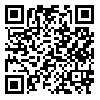Volume 11, Issue 2 (6-2022)
JCHR 2022, 11(2): 107-116 |
Back to browse issues page
Download citation:
BibTeX | RIS | EndNote | Medlars | ProCite | Reference Manager | RefWorks
Send citation to:



BibTeX | RIS | EndNote | Medlars | ProCite | Reference Manager | RefWorks
Send citation to:
Rabiei S, Ashouri A, Mahdavi-Roshan M. Knowledge, Attitude and Practice Regarding Food Labeling in Patients with Chronic Diseases in Gilan Province, North pf Iran. JCHR 2022; 11 (2) :107-116
URL: http://jhr.ssu.ac.ir/article-1-725-en.html
URL: http://jhr.ssu.ac.ir/article-1-725-en.html
1- 1Department of Nutrition Researches, National Nutrition and Food Technology Research Institute and Faculty of Nutrition and Food Technology Sciences, Shahid Beheshti University of Medical Sciences and Health Services, Tehran, Iran
2- School of Health, Guilan University of Medical Sciences, Rasht, Iran
3- Cardiovascular Diseases Research Center, Department of Cardiology, Heshmat Hospital, School of Medicine, Guilan University of Medical Sciences, Rasht, Iran Department of Community Medicine, Faculty of Medicine, Guilan University of Medical Sciences, Rasht, Iran ,samirarabiei2015@gmail.com
2- School of Health, Guilan University of Medical Sciences, Rasht, Iran
3- Cardiovascular Diseases Research Center, Department of Cardiology, Heshmat Hospital, School of Medicine, Guilan University of Medical Sciences, Rasht, Iran Department of Community Medicine, Faculty of Medicine, Guilan University of Medical Sciences, Rasht, Iran ,
Abstract: (2221 Views)
Abstract
Introduction: Food labels can be beneficial instruments for patients with chronic diseases to take care of the health. The study aimed to assess knowledge, attitude and practice of patients with chronic diseases about food labeling and effects of sociodemographic factors on it.
Methods: A cross-sectional study was conducted during 2018-2019 on 800 patients with chronic diseases who referred to clinics of Heshmat and Razi hospitals in Gilan, Iran, through convenience sampling. Anthropometric measurements and sociodemographic information were assessed. Status of knowledge, attitude and practice toward food labeling were assessed through a self-reported questionnaire. Mann-whitney U-test and Kruscal-wallis test was used for statistical analysis. P-value<0.05 was considered as significant.
Results: The mean age of participants was 55.6±14..The mean± SD of knowledge score was 8.47± 1.22. Almost 70% of the patients believed that written date on food package insures that the product is fresh. 68% of them believed that reading nutritional information on food labels is helpful to choose a product with high nutritional value. In the field of practice, 99% of participants paid attention to food labels when purchasing, however, the majority of them read these labels to find out the produce and expiry date and price. Only 11% of the participants read food labels when purchasing to get nutritional information.
Conclusion: Patients with chronic diseases have good knowledge but poor practice about food labeling. Regarding the importance of food choices in prevention of chronic diseases, educating people about the importance of food labels seems necessary.
Introduction: Food labels can be beneficial instruments for patients with chronic diseases to take care of the health. The study aimed to assess knowledge, attitude and practice of patients with chronic diseases about food labeling and effects of sociodemographic factors on it.
Methods: A cross-sectional study was conducted during 2018-2019 on 800 patients with chronic diseases who referred to clinics of Heshmat and Razi hospitals in Gilan, Iran, through convenience sampling. Anthropometric measurements and sociodemographic information were assessed. Status of knowledge, attitude and practice toward food labeling were assessed through a self-reported questionnaire. Mann-whitney U-test and Kruscal-wallis test was used for statistical analysis. P-value<0.05 was considered as significant.
Results: The mean age of participants was 55.6±14..The mean± SD of knowledge score was 8.47± 1.22. Almost 70% of the patients believed that written date on food package insures that the product is fresh. 68% of them believed that reading nutritional information on food labels is helpful to choose a product with high nutritional value. In the field of practice, 99% of participants paid attention to food labels when purchasing, however, the majority of them read these labels to find out the produce and expiry date and price. Only 11% of the participants read food labels when purchasing to get nutritional information.
Conclusion: Patients with chronic diseases have good knowledge but poor practice about food labeling. Regarding the importance of food choices in prevention of chronic diseases, educating people about the importance of food labels seems necessary.
Review: Research |
Subject:
Public Health
Received: 2021/01/9 | Accepted: 2022/06/20 | Published: 2022/07/5
Received: 2021/01/9 | Accepted: 2022/06/20 | Published: 2022/07/5
Send email to the article author
| Rights and permissions | |
 |
This work is licensed under a Creative Commons Attribution 4.0 International License. |







